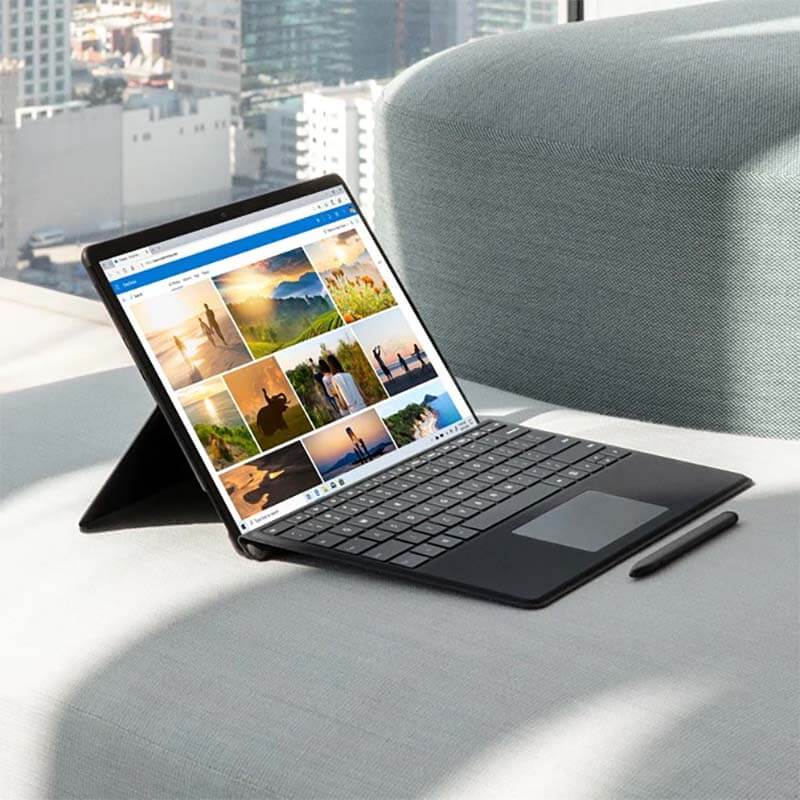


Microsoft Surface Pro X review: TypeCover keyboard and Surface Pen

It's crisp, sharp, bright and, as our testing revealed, it lives up to the exceedingly high standard set by previous Surface devices.īy the looks of Microsoft’s marketing, the Pro X is primarily being sold as a business device, but artists and designers will be relieved to hear that - in terms of display fidelity, at any rate - it’s just as well-equipped for creative work like the rest of its stablemates. As previously mentioned, it's a 13in panel and unsurprisingly, it's sporting the Surface range's standard 3:2 aspect ratio, along with a highly commendable resolution of 2880 x 1920 - higher than the Surface Laptop 3, along with most other ultraportables on the market. If you do want to use it as a tablet, however, you won't be disappointed. One thing that was a little more annoying is that we found it harder than usual to get the necessary purchase to open up the hinge. Using it in tablet mode, it didn't feel like we could get quite as comfortable a grip without obscuring the screen as on previous devices, but that's not necessarily a deal-breaker since we generally find ourselves using Surface devices in laptop mode 90% of the time anyway. In fact, for all its ‘safe’ design, it does exude an air of premium quality. The generally-accepted wisdom with any touch-centric device is that thicker bezels are an acceptable (or even desirable) trade-off in exchange for not accidentally pressing stuff with your thumb whenever you hold it like a tablet, but it's hard to deny that it does look good. Microsoft has boasted that it's crammed a 13in display into a 12in form factor, but in doing so, it's dramatically reduced the size of the screen bezels. The super-thin bezels are an interesting choice, too. A chassis that thin leaves little room for cooling, for example, and it does have a tendency to get a little toasty if you push it too hard. That's very portable indeed (if not quite as portable as the Acer Swift 7) but it may also have its downsides. It's also amazingly petite, weighing just 774g (sans keyboard) and measuring 7.3mm thick. The round edges look much more generic than the distinctive angles and lines of the Pro's frame, and while matte black is a safe, professional colour, making it the only option is a shame when the rest of the range is so vibrant. It's attractive enough, although a little dull-looking compared to the regular Surface Pro. The design of the Pro X is immediately familiar it's essentially just a more rounded (and thinner) version of the well-established Surface Pro design. The rub, however, is that it can’t run the full gamut of x86 Windows apps. The Pro X is designed to take advantage of 4G connectivity and uses a Qualcomm chip in order to maintain strong battery life while it does so. This may sound like madness, but there’s method to it.


 0 kommentar(er)
0 kommentar(er)
